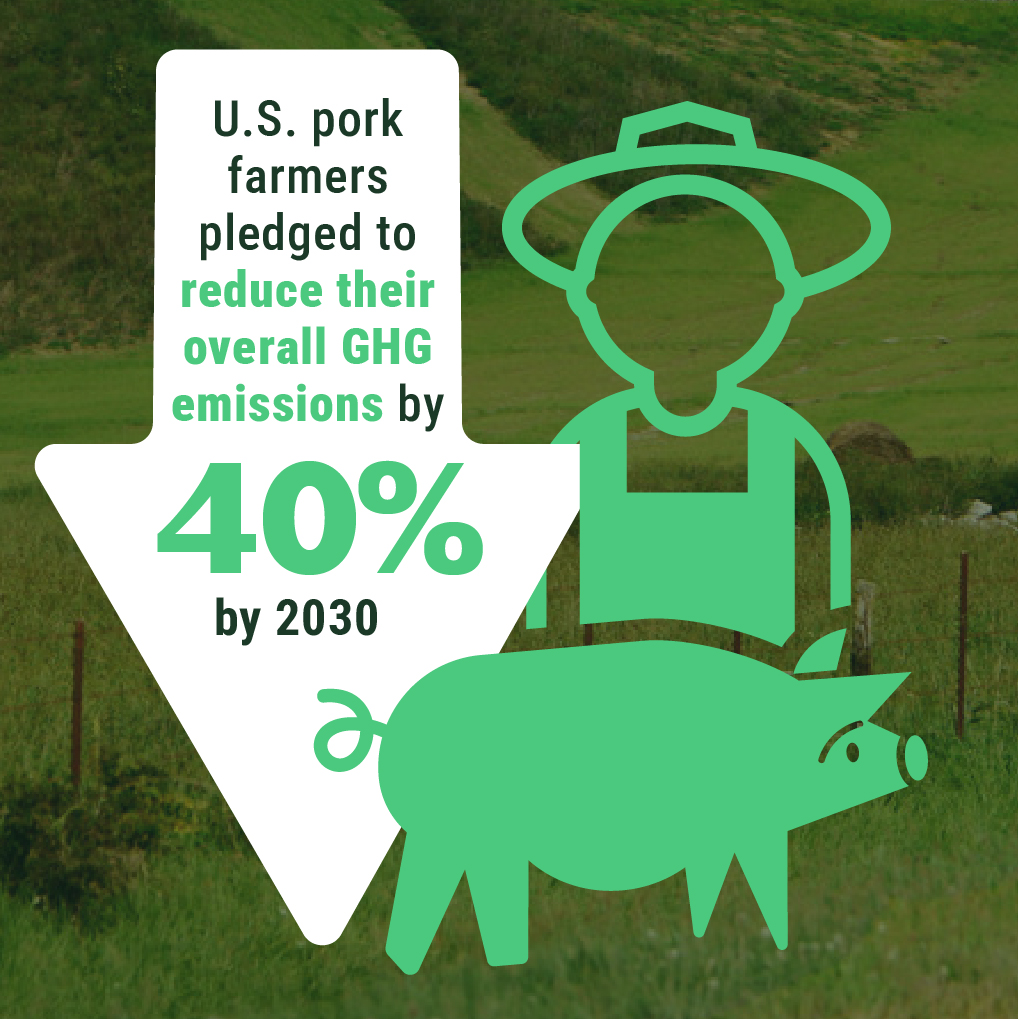As of 2024, more than 100 countries, 9,000 companies, 1,000 cities, 1,000 educational institutions and 600 financial institutions have joined the Race to Zero – committing to reducing global emissions by 50% by the year 2030.
Countries like China, the U.S., Brazil, the EU, and others are leading efforts to reduce emissions, and many have specific strategies targeting the agricultural sector, including pig farming. For example, in the U.S., pig farmers pledged to reduce their overall GHG emissions by 40% by 2030.
Raising pigs that are resistant to PRRS could be an innovative way to help achieve these global GHG reduction commitments.

“Genetics have historically been underutilized as a tool for reducing emissions. At a time when agriculture is under pressure to meet ambitious GHG reduction targets, we need to identify solutions that are supported by data.”
Banks Baker, global director of product sustainability, PIC
A 2023 Food and Agriculture Organization of the United Nations (FAO) report identified improved genetics as the number one opportunity for sustainably increasing productivity and decreasing GHG emissions in the livestock sector.
When it comes to animal agriculture, one of the most important ways to improve sustainability is to breed the right animal – one that is healthy and requires fewer resources.
But how much can animal genetics really impact carbon emissions?
One of the best ways to know is to conduct a Life Cycle Assessment (LCA) – a science-based study that measures the environmental impact of a product from the beginning to end of its production process.
PIC worked with global environmental modeling expert Dr. Greg Thoma to complete a Life Cycle Assessment (LCA) comparing the environmental impact between PRRS-resistant pigs and non-resistant pigs. According to the results of the LCA, eliminating PRRS could reduce greenhouse gas emissions by up-to 9% in the U.S.
When animals are sick, they require more resources like food, water and antibiotics, which increases their environmental impact.
PRRS-resistant pigs lighten the load on the environment, which was also confirmed by the Life Cycle Assessment.
Sustainability is a popular buzzword, but it means nothing unless supported by credible, defensible data and science.
That’s why PIC is putting the LCA results into action to prove livestock genetics can deliver real, measurable carbon reductions. PIC is working with industry partners like the National Pork Board and the Protein PACT to set the standard for measuring, verifying and credibly claiming GHG reductions from genetics.
Part of this work is validating that better animal genetics, and ultimately the PRRS-resistant pig, are a valuable tool to help achieve ambitious climate goals.

